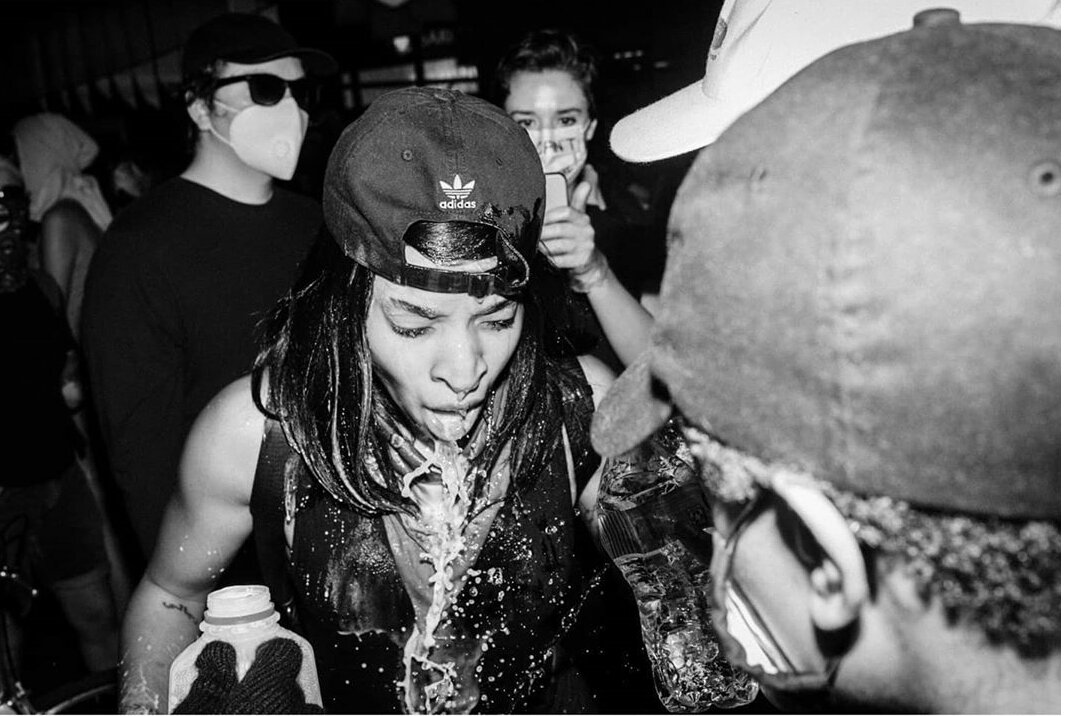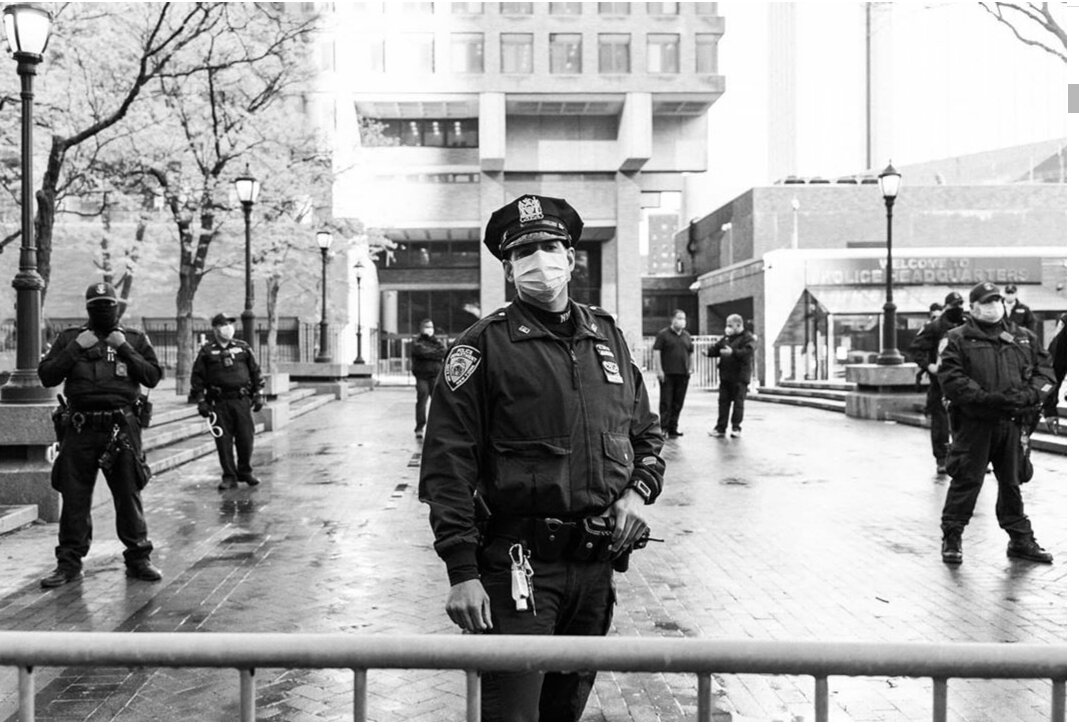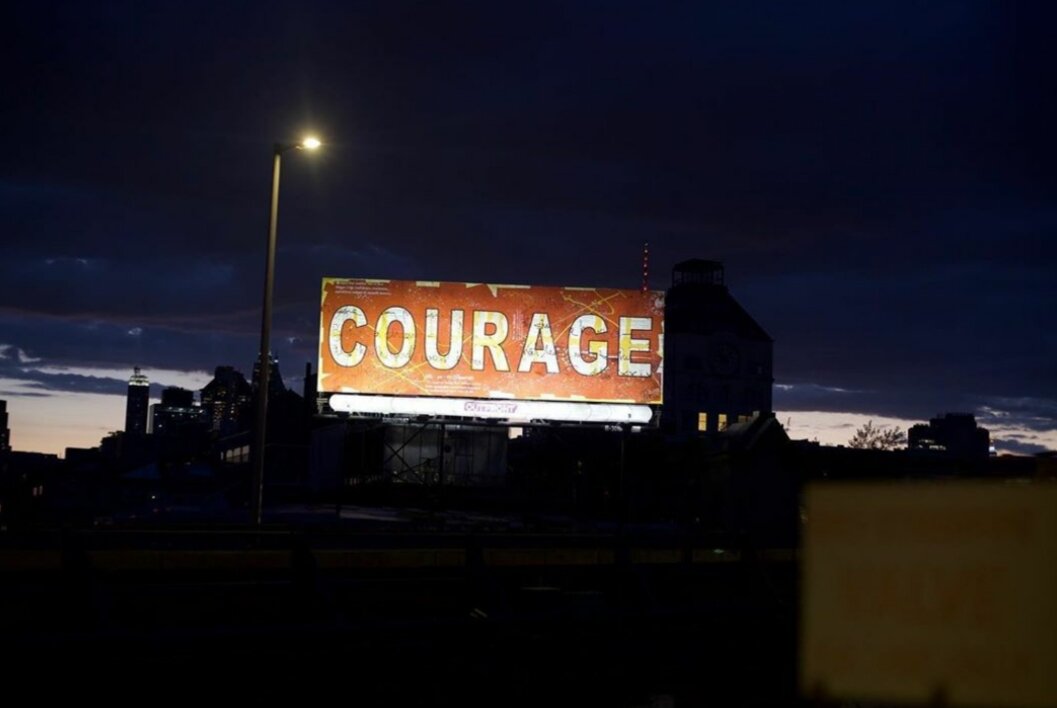Black Lives Matter: Documented by Black Lives
Historical moments for Black people and people of color in America have been documented by whites, along with their own intricate biases. At the same time, relevant news sites and channels project only what is convenient for their companies, dismissing important statements and images. But things have changed with Millennials and Gen Z, with the usage of the Internet —alternative news sites and the ability to create blogs and websites easily to spread information and opinions— and social media.
Mark Clennon @mark.c
This is a generation that is taking the lead in all the areas of their struggles. With the technology we posses and the ability to extend information globally in matter of seconds, we have in our hands tools that no other generation during a social movement like this ever had before; and has made it possible for voices to outgrow to a point where they can be heard from any location.
With this powerful tool, we need to be cautious and responsible. Activists are asking people who post photos on social media to blur out faces or simply refrain from publishing content that could give away the identity of a protestor to the authorities.
Ézé Amos @ezeamosphotography
Chris Facey @coco.butter.shutter
Angela @lytevisuals
Some images have been circulating the media without us knowing the original author— a phenomenon prone to happen since visual information nowadays has a capability of spreading uncontrollably— but, that cannot excuse us from recognizing the work of black journalists and activists that are currently in the midst of it all. Here are some of the photographers and examples of their personal projects:
Mark Clennon @mark.c
Mark Clennon is an artist based on New York. On May 30th, in Times Square, his friends Chris and Ria were arrested, after peacefully protesting, he told Time Magazine he was yelling, holding the camera above his head making sure the two protesters were safe.
Mark Clennon @mark.c
Mark Clennon @mark.c
Mark Clennon @mark.c
Clennon was chanting with his fist up, actively in the protest when he took this photo, he expressed: “The American flag behind the glass, in that gold, gilded case, it’s inaccessible to me. I have an urge to just break through that glass because that flag is for me, too. That’s the visceral feeling I had when I noticed the flag, and I think that’s the feeling this man had when he saw it, too”.
The photo was posted on May 30th and currently has more than half a million likes on Instagram.
Clennon mentioned he was very mindful while taking photos: signs of Breonna Taylor to highlight black women in the movement, he captured people walking, and cropped them in a way so tattoos and faces were not showing.
Tony Mobley @tonemobley
Tony Mobley is a US Navy veteran and photographer in Washington D.C., he specializes in portraits and currently contributes to the virtual blog Everyday Black America, in which many of his photos have been featured.
Tony Mobley @tonemobley
Portrait of Mobley's family member, one of the nurses working with COVID-19 patients in Virginia.
Tony Mobley @tonemobley
Tony Mobley @tonemobley
Mobley took this photograph during a protest after the video of Ahmaud Aubrery being killed by two white men was made public. His post from May 7th includes a known phrase from James Baldwin “to be a Negro in this country and to be relatively conscious is to Be in range almost all the time”. Mobley added below in one of the comments: “ghost of yesterday reading its ugly head. They enslaved our people and still hate us to this day. They never wanted slavery to go away”.
Chris Facey @coco.butter.shutter
This photo, taken by Chris Facey, a street and lifestyle photographer from Brooklyn, has been featured in Buzzfeed, Nymag, among other news sites. In an interview with New York Magazine, he mentioned his intention was to capture: “people that are fed up… [people] who are sick and tired of being sick and tired”.
Chris Facey @coco.butter.shutter
Chris Facey @coco.butter.shutter
Chris Facey @coco.butter.shutter
Chris Facey @coco.butter.shutter
Chris Facey @coco.butter.shutter
Before the pandemic, Facey was focusing on a personal project titled “Dad Duty”, where he portrayed the everyday tasks of fathers with their children, from strolls around the city, to more intimate portrayals of the parent calling the child's attention.
Photo of his personal project “Dad Duty”
Photo from “Dad Duty”
Chris Facey @coco.butter.shutter
Some of the photos seem to be of close friends, others— as a street photographer— are inevitably of strangers; in the interview with NY Magazine, Facey commented on his experience about being a black street photographer: “every day I have to be weary of my camera for that fear that it can be taken as a weapon— an excuse to take my life”.
Angela Lyte Visuals @lytevisuals
Angela is a New York based photographer and visual artist. Her work focuses on black and white, street style and landscape.
Angela @lytevisuals
Angela @lytevisuals
Angela @lytevisuals
Angela posted a series of 7 parts on her Instagram. Following the protests from May 30th to June 2nd. She said processing the feelings during the protests has been difficult, in her own words: “It's extremely hard to put into words what it feels to be out there. It's painful but honest and needed”.
Angela @lytevisuals
Angela @lytevisuals
Angela @lytevisuals
Angela @lytevisuals
Taken from her personal project “The Bloom Project”, a series of black and white collages integrating her photographs and images of flowes.
Ézé Amos @ezeamosphotography
Ézé Amos is a photojournalist from Virginia, his work is mainly street documentary and lifestyle, he is a contributor for the Washington Post, The Associated Press and Reuters.
Ézé Amos @ezeamosphotography
Ézé Amos @ezeamosphotography
Ézé Amos @ezeamosphotography
Ézé Amos @ezeamosphotography
Ézé Amos @ezeamosphotography
Throughout the protests, non-black allies have been affirming the photographic works of black people in the movement, encouraging the anti-capitalist action of building community rather than a competitive environment.
For example, last year, feminists from Mexico were asking journalist men to step aside during protests to leave the documenting and photographing to the women, since the journalistic field is still predominantly occupied by men.
That control allowed protection, dignifying the community, and assured accurate representation.
In the words of the Authority Collective, an organization of womxn and non-conforming people of color, that offers information for allies and safety tips when taking photos during protests, expressed on their website: “it is crucial black photographers are prioritized to cover their own communities, in order to build a more comprehensive visual narrative”.
Photographer Haruka Sakaguchi took the initiative of creating a database of Black photographers, which now has more than 700 names. This list, created on May 31st, was intended as a direct response to the lack of Black photographers receiving commissions to cover the protests. The #HireBlackPhotographers project that started with a Google Spreadsheet is now a consolidated database hosted by Diversity Photo, that includes the photographer’s specialization and if they are currently documenting BLM protests or not. Sakaguchi emphasized the importance of keeping the longevity of the list “beyond the current protests and whatever publications deem to be ‘Black stories”.
This example of comradeship proves that as the self-aware generation that we are, we are assuming responsibility to respect struggles and spaces, and reassure a sense of community and solidarity, to go against everything colonialism and capitalism has taught us.




































